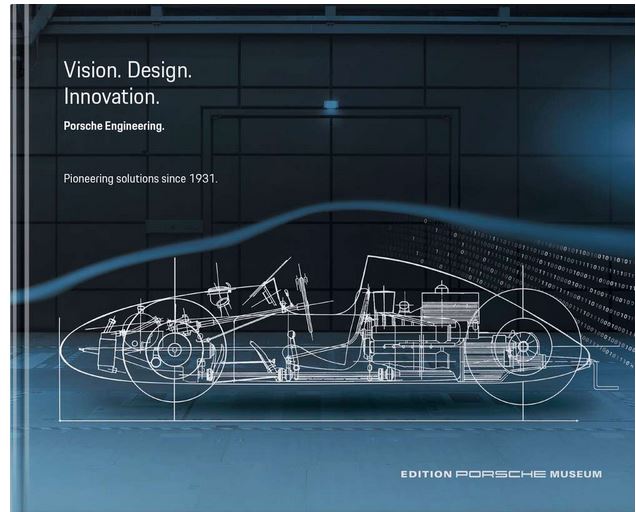
In 1931 Ferdinand Porsche started his own business in a rented office in Stuttgart’s Kronenstrasse thus laying the foundation for today’s Porsche brand. Since then, the name Porsche has been closely associated with development projects for customers worldwide. Porsche Engineering continues this tradition with innovative solutions and a high level of digitalization expertise in an international network of locations.
Technical details:
Edition Porsche Museum
Format: 29.5 x 24 cm, Hardcover
Pages: 240
Illustrations: 140
Language: English
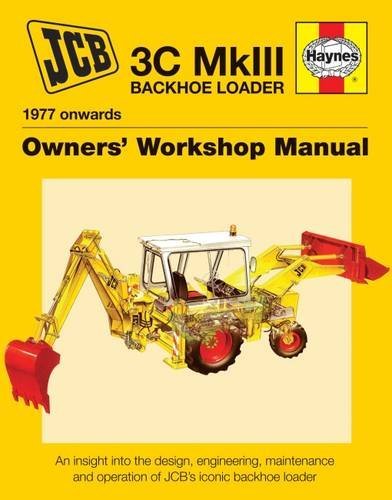
This Manual will cover the JCB Backhoe Loader – the iconic ‘yellow’ digger, variants of which have now been in production for over 50 years. The book will be produced with the full co-operation of JCB, who are likely to take approx 2,000 copies to use for promotional activity to celebrate the company’s 70th anniversary in October 2015 (a year of celebrations is planed running until October 2016). JCB has an extensive archive from which material will be drawn for use in the book, and it is envisaged that the ‘project vehicle’ will be a ‘classic’ 1979 3C Backhoe Loader – revered by enthusiasts, and the machine that took JCB from leading British manufacturer to a global player.

This book explains how modern Formula 1 cars work and demystifies the extraordinary technology they contain.
By meticulously dissecting an F1 car into its constituent components, the author describes the design, engineering and function of every element, enabling the reader to develop a full understanding of how it all comes together to form a competitive package. The text is expertly written to satisfy both the engineering-minded reader as well as any enthusiast of the sport who wants to delve deeper, and supplemented by a superb range of close-up photographs, technical illustrations and diagrams.
- Chassis: design and manufacture; survival cell, fuel tank, impact structures, stiffness.
- Aerodynamics: principles, front and rear wings, turning vanes, sidepods, floor, wheels and their effect, brake ducts, suspension components, diffuser, Drag Reduction System (DRS).
- Suspension, steering and brakes: suspension layout, geometry and adjustments; steering wheel, column and geometry; brake hydraulics, brake-by-wire system, discs, calipers, pads and cooling.
- Power unit: the hybrid era, Internal Combustion Engine (ICE), Energy Recovery System (ERS), fuel.
- Transmission: clutch, gearbox, differential, driveshafts.
- Electronics: starting system, Electronic Control Unit (ECU), sensors, radio and data communications, cockpit display, cameras.
- And more: wheels and tyres; hydraulic system; safety equipment; cockpit controls.
- Chapters about car design and set-up.
- Use of analysis and simulation techniques such as computational fluid dynamics (CFD), wind-tunnel testing and rig testing. All F1 fans will find this book a deeply rewarding companion to enhance their appreciation of the sport.
All F1 fans will find this book a deeply rewarding companion to enhance their appreciation of the sport.
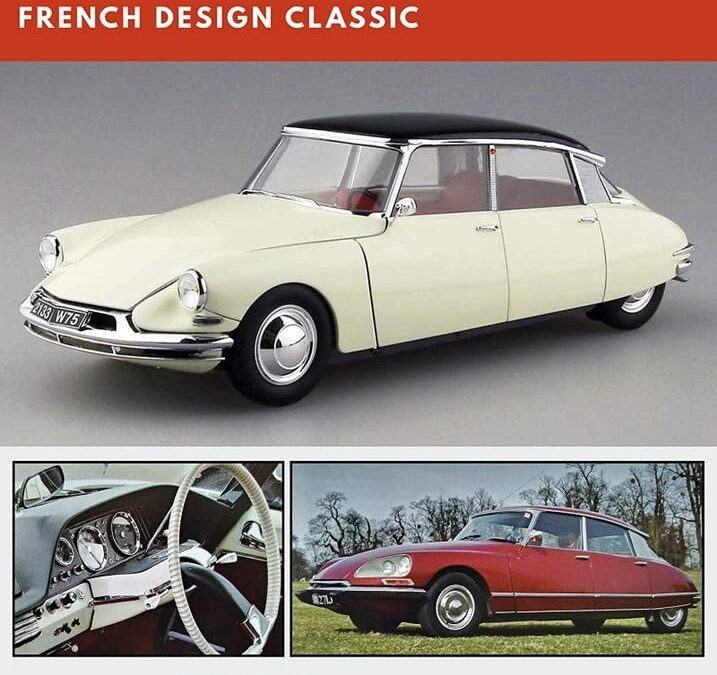
Launched in 1955 yet looking like a sci-fi design proposal for a future then undreamed of, Flaminio Bertoni’s ellipsoid sculpture with wheels that was the Citroën DS stunned the world.
There was a near riot at the 1955 Paris Motor Show launch of the car, orders flooded in for this, the new ‘big Citroën’ (a Voiture a Grande Diffusion or VGD) as the car that replaced the legendary Traction Avant range.
The term ‘DS’ stems from two Citroën parts of nomenclature – the type of engine used as the 11D, (D) and the special hemispherical design of the cylinder head as ‘Culasse Special’ (S): DS out of ‘Deesse’ or Goddess, was a more popular myth of ‘ DS’ origination, but an erroneous one.
But it was not just the car’s aerodynamically advanced body shape (Cd. 0.37) that framed the genius of the DS: hydro pneumatic self-levelling suspension, advanced plastics and synthetics for the construction of the roof and dashboard/fascia, and amazing road holding and cabin comfort were some of this car’s highlights.
Only the lack of an advanced new engine was deemed a missed opportunity. In fact Citroën had created a new engine for the car but lacked the resources to produce it in time for 1955.
DS was a major moment in the history of car design, one so advanced that it would take other auto manufacturers years to embrace. Yet DS in its ‘aero’ design was the precursor to today’s low drag cars of curved form.
Manufactured worldwide, used by presidents, leaders, diplomats, farmers and many types of people, the DS redefined Citroën, its engineering and design language, and its brand, for decades to come.
Prone to rust, not the safest car in the world, and always lacking a smoother powerplant, the DS still became an icon of car design.
Reshaped with a new nose and faired-in headlamps in 1967, DS remained in production until 1975.
Across its life DS spawned an estate car variant as the ‘Safari’, a range of limousines, two-door convertibles, and even coach-built coupes and rally specials.
This car was a product design that became an article of social science – it was that famous and it defined a European design movement upon a global stage then packed with ‘me too’ copyist designs.
The DS or ‘Goddess’ as it was tagged, was a tear-drop shaped act of French confidence in a world of the regurgitation of the known. Some argue that DS and its effect has never been surpassed.
This new value-for-money book provides innovative access to the design, history, and modeling of the revolutionary DS – one of the true ‘greats’ of motoring history and, a contemporary classic car of huge popularity.
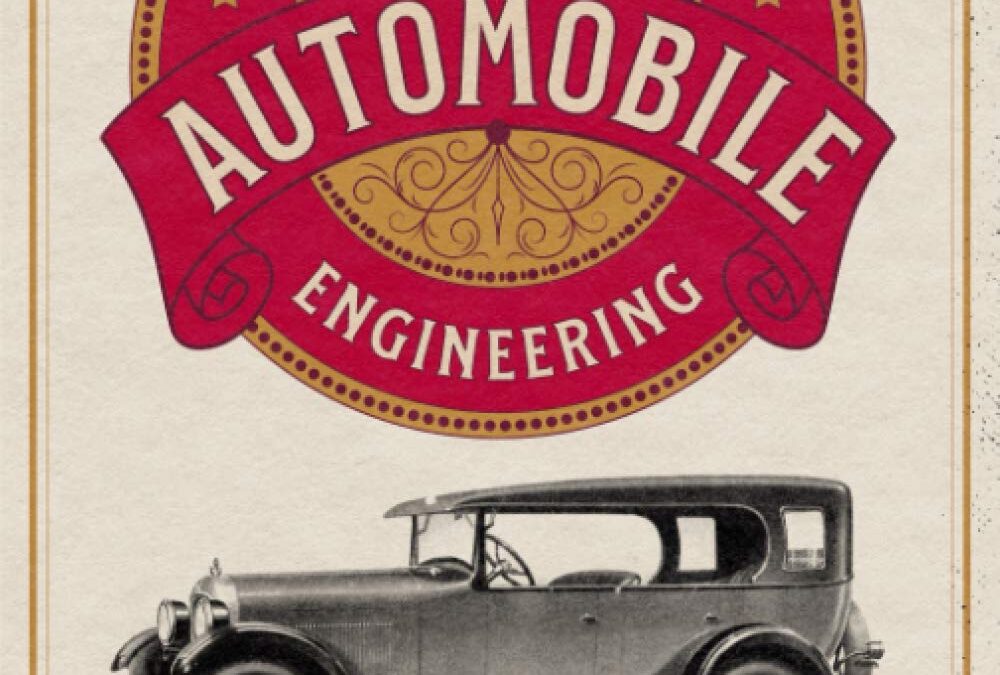
Volume 5 concludes the in-depth five-part series with detailed antique car wiring diagrams, data sheets, and a thorough look at classic electrical systems.
The Classic Cars and Automobile Engineering series spans five volumes with more than 1500 images and diagrams for enthusiasts, collectors, and mechanics. Volume 5 includes:
– Digitally restored images and diagrams
– Big 7” x 10” pages
– Easy to read writing style
– Author’s original page layouts
– Classic type font and hand-drawn lettering
– Bold retro-style cover
Everything that you ever wanted to know about the inner workings of antique cars, trucks, bikes, engines, tractors and more are included in this expansive tome of knowledge. Originally printed in 1926, this vast wealth of knowledge for classic car lovers was digitally restored and enhanced by writer-historian Mark Bussler and the CGR Publishing Restoration Workshop for a new generation of automobile enthusiasts.
This detailed, illustrated book collection is a must-have reference guide for all owners of period automobiles, motorcycles, airplanes, and anything powered by early 20th-century engines. Enlarged and printed on large 7” by 10” pages, The Classic Cars and Automobile Engineering series is designed for easy reading in the shop or library. Volume 5 focuses on electrical systems, wiring diagrams and data sheets.
Included subjects: How to read wiring diagrams – symbols – charts – generators – lamp voltages – dimming devices – electric horns – ignition timing – spark plugs – distributors – currents – methods of regulation – proper conduction – hydrometer tests – low battery – electric gear shifts – and more.
Includes wiring diagrams and datasheets for Apperson, Buick, Cadillac, Case, Chalmers, Chandler, Chevrolet, Chrysler, Cleveland, Cole, Cunningham, Davis, Dodge, Dort, Duesenberg, Durant, Essex, Ford, Flint, Franklin, Gardner, Gray, Haynes, Hudson, Hupmobile, Jackson, Jewett, Jordan, Kissel, LaFayette, Lexington, Lincoln, Marmon, Maxwell, Mercer, Moon, Nash, National, Oakland, Oldsmobile, Overland, Package, Paige, Peerless, Pierce-Arrow, Rco, Rickenbacker, Rollin, Rolls-Royce, R&V Knight, Star, Stephens, Studebaker, Stutz, Wills Sainte Claire, Willys-Knight, and Winton.
Table of contents:
– Chapter 1: Reading Wiring Diagrams and Auxiliary Electrical Equipment
– Chapter 2: Wiring Diagrams and Data Sheets
– Chapter 3: Summary of Electrical Principles
– Chapter 4: Ignition Instructions
– Chapter 5: Generators
– Chapter 6: Wiring Systems
– Chapter 7: Battery
– Chapter 8: Glossary of Automobile Terms
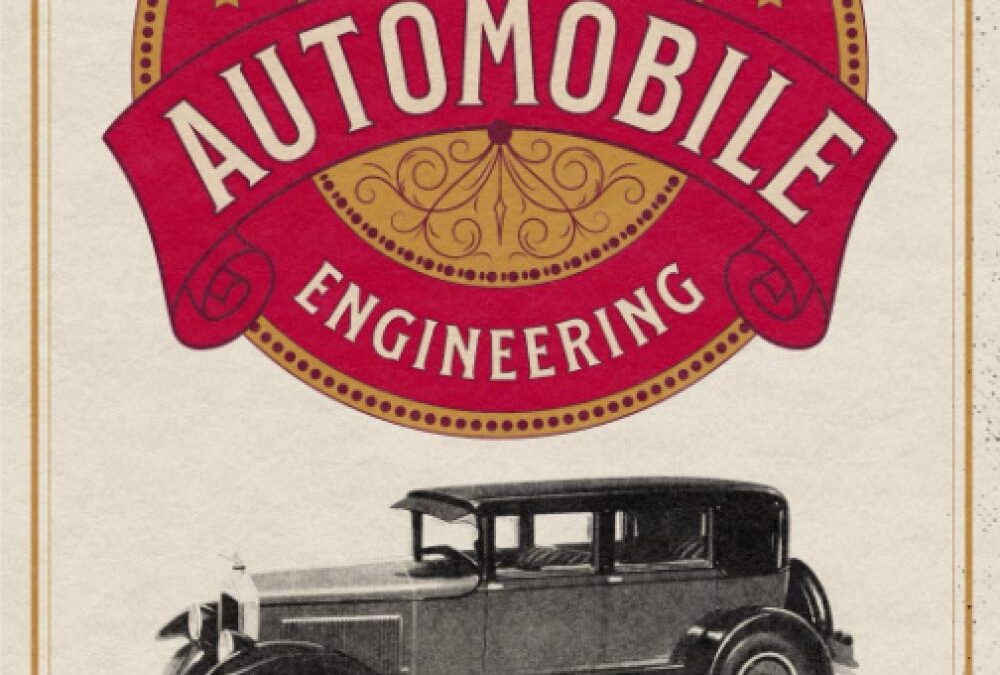
Volume 4 in this illustrated five-part series highlights ignitions, starters, generators, batteries, and electrical repairs.
The Classic Cars and Automobile Engineering series spans five volumes with more than 1500 images and diagrams for enthusiasts, collectors, and mechanics. Volume 4 includes:
– Digitally restored images and diagrams
– Big 7” x 10” pages
– Easy to read writing style
– Author’s original page layouts
– Classic type font and hand-drawn lettering
– Bold retro-style cover
Everything that you ever wanted to know about the inner workings of antique cars, trucks, bikes, engines, tractors, and more are included in this expansive tome of knowledge. Originally printed in 1926, this vast wealth of knowledge for classic car lovers was digitally restored and enhanced by writer-historian Mark Bussler and the CGR Publishing Restoration Workshop for a new generation of automobile enthusiasts.
This detailed, illustrated book collection is a must-have reference guide for all owners of period automobiles, motorcycles, airplanes, and anything powered by early 20th-century engines. Enlarged and printed on large 7” by 10” pages, The Classic Cars and Automobile Engineering series is designed for easy reading in the shop or library. Volume 4 focuses on electrical equipment and features elementary classic car electric system workings, ignition fundamentals, batteries, electrical repair, starting motors, and more.
Specific detailed subjects include magnetism, poles, laws, magnetic substances, dynamos, armature windings, field magnets, induction, self-induction, source of current, magnetos, spark plugs, induction coils, spark timing, magneto speeds, types of wiring systems, battery charging, cleaning a battery, replacing a jar, Edison Cell care, testing equipment, lamp troubles, and much more.
Table of contents:
– Chapter 1: Electrical Principles
– Chapter 2: Ignition Fundamentals
– Chapter 3: Ignition Systems
– Chapter 4: Ignition Operations
– Chapter 5: Motors
– Chapter 6: Generators
– Chapter 7: Storage Batteries
– Chapter 8: Electrical Repairs
– Chapter 9: Ford Car Electrical System
– Chapter 10: Ohm’s Law
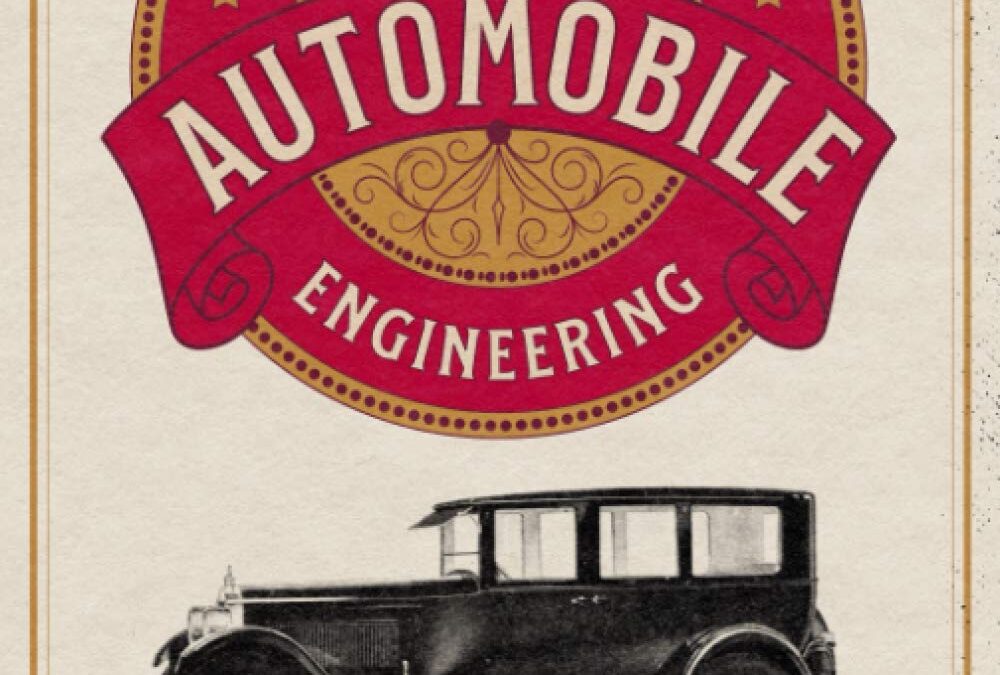
Volume 3 in this illustrated five-part series highlights antique motorcycles, tractors, airplane engines, period welding techniques, and Q&A.
The Classic Cars and Automobile Engineering series spans five volumes with more than 1500 images and diagrams for enthusiasts, collectors, and mechanics. Volume 3 includes:
– Digitally restored images and diagrams
– Big 7” x 10” pages
– Easy to read writing style
– Author’s original page layouts
– Classic type font and hand-drawn lettering
– Bold retro-style cover
Everything that you ever wanted to know about the inner workings of antique cars, motorcycles, engines, tractors and more are included in this expansive tome of knowledge. Originally printed in 1926, this vast wealth of knowledge for classic car and bike lovers was digitally restored and enhanced by writer-historian Mark Bussler and the CGR Publishing Restoration Workshop for a new generation of automobile and classic motorcycle enthusiasts.
This detailed, illustrated book collection is a must-have reference guide for all owners of period automobiles, motorcycles, airplanes, and anything powered by early 20th-century engines. Enlarged and printed on large 7” by 10” pages, The Classic Cars and Automobile Engineering series is designed for easy reading in the shop or library. Subjects covered in Volume 3 include antique motorcycles with illustrations of classic Harley-Davidson models such as the Twin-Cylinder Three-Speed Motorcycle, Thor lightweight bikes, The Merkel Motorcycle, Dayton Motor Bicycle, a detailed Excelsior Motorcycle diagram, and more.
Aviation engines are covered in detail from manufacturers such as King-Bugatti, Curtiss, Liberty, Packard, and Sunbeam. Tractors, air-cleaners, oils, ignitions, workbenches, blowtorches, micrometers, tool grinding, drill presses, gases, arc welding, types of welds, after-treatment, and much more are covered with numerous detailed illustrations.
Table of contents:
– Chapter 1: Motorcycles
– Chapter 2: Aviation Engines
– Chapter 3: Gasoline Tractors
– Chapter 4: Shop Information
– Chapter 5: Oxy-Acetylene Welding Practice
– Chapter 6: Questions and Answers
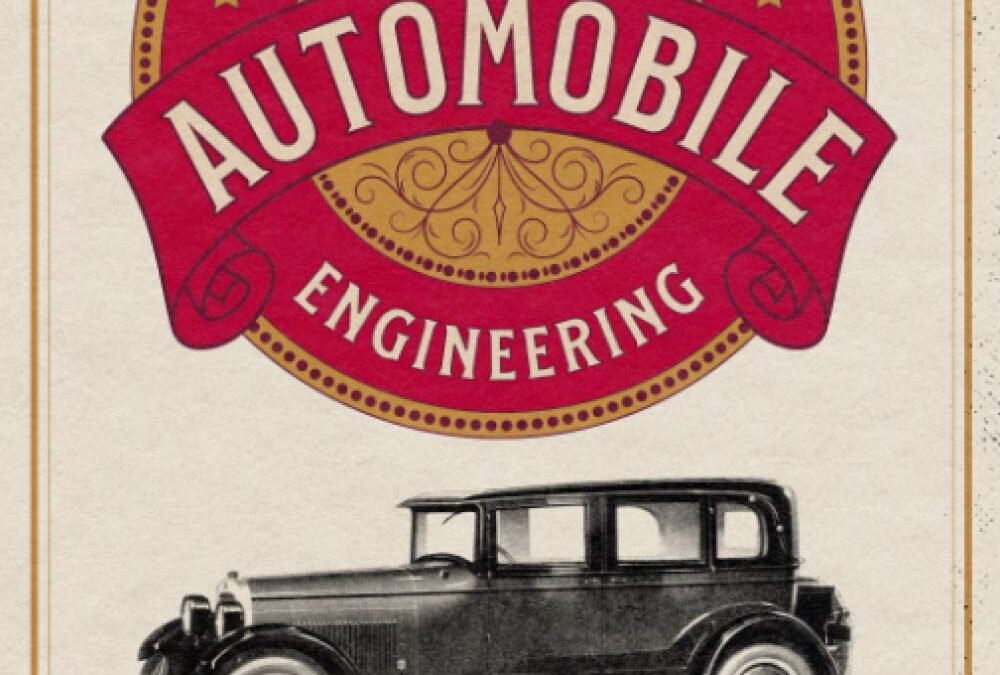
Part 2 of the definitive five-part book series about classic automobile engineering covers transmissions, brakes, wheels, tires, and more.
The Classic Cars and Automobile Engineering series spans five volumes with more than 1500 images and diagrams for enthusiasts, collectors, and mechanics. Includes:
– Digitally restored images and diagrams
– Big 7” x 10” pages
– Easy to read writing style
– Author’s original page layouts
– Classic type font and hand-drawn lettering
– Bold retro-style cover
Everything that you ever wanted to know about the inner workings of antique cars, trucks, bikes, engines, tractors, and more is included in this expansive tome of knowledge. Originally printed in 1926, this vast wealth of knowledge for classic car lovers was digitally restored and enhanced by writer-historian Mark Bussler and the CGR Publishing Restoration Workshop for a new generation of automobile enthusiasts.
This detailed, illustrated book collection is a must-have reference guide for all owners of period automobiles, motorcycles, and anything powered by early 20th-century engines. Enlarged and printed on large 7” by 10” pages, The Classic Cars and Automobile Engineering series is designed for easy reading in the shop or library. Subjects covered in Volume 2 include transmissions, axles, brakes, wheels, tires, and classic Fords.
Table of contents:
– Chapter 1: Transmissions
– Chapter 2: Rear Axles and Final Drive
– Chapter 3: Brakes
– Chapter 4: Steering Apparatus
– Chapter 5: Frames and Special Type of Drive
– Chapter 6: Springs and Shock Absorbers
– Chapter 7: Front Axles and Bearings
– Chapter 8: Wheels
– Chapter 9: Rims
– Chapter 10: Tires
– Chapter 11: Ford Construction and Repair
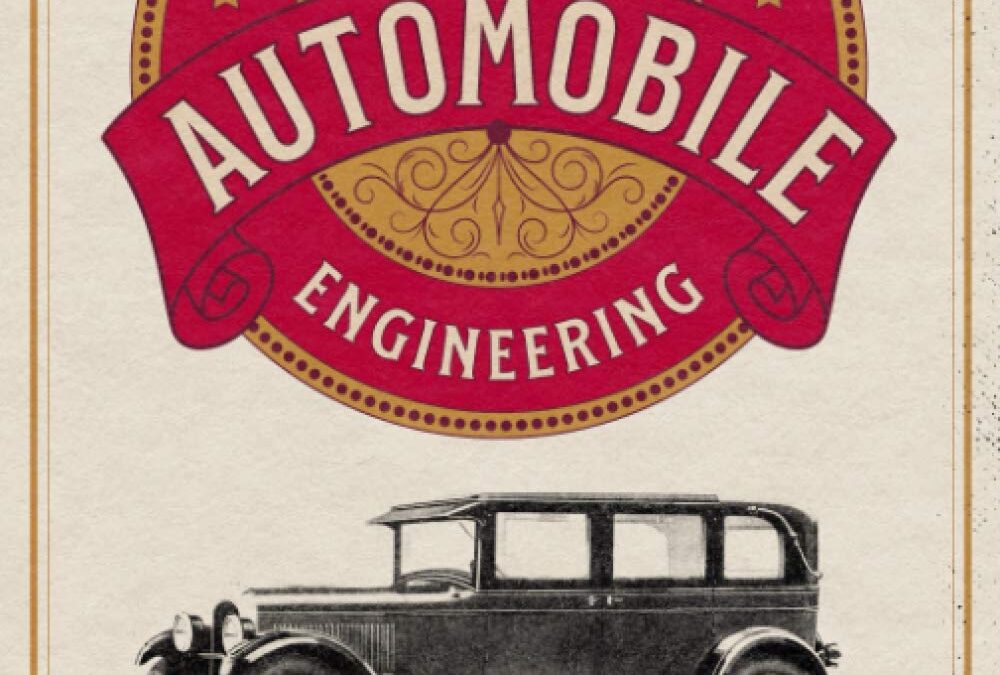
The definitive five-part book series about classic automobile engineering starts here with Volume 1.
The Classic Cars and Automobile Engineering series spans five volumes with more than 1500 images and diagrams for enthusiasts, collectors, and mechanics. Includes:
– Digitally restored images and diagrams
– Big 7” x 10” pages
– Easy to read writing style
– Author’s original page layouts
– Classic type font and hand-drawn lettering
– Bold retro-style cover
Everything that you ever wanted to know about the inner workings of antique cars, trucks, bikes, engines, tractors, and more is included in this expansive tome of knowledge. Originally printed in 1926 by the American Technical Society, this vast wealth of knowledge for classic car lovers was digitally restored and enhanced by writer-historian Mark Bussler and the CGR Publishing Restoration Workshop for a new generation of automobile enthusiasts.
This detailed, illustrated book collection is a must-have reference guide for all owners of period automobiles, motorcycles, and anything powered by early 20th-century engines. Enlarged and printed on large 7” by 10” pages, The Classic Cars and Automobile Engineering series is designed for easy reading in the shop or library. Subjects covered in Volume 1 include elementary engine principles – spark plug position – throttle valves – the inner workings of cylinders – crankshaft balance – water cooling systems – cone, disc, hydraulic, borg and beck clutches – four-cylinder, six-cylinder, eight-cylinder, and twelve-cylinder engines – much more.
Table of contents:
– Chapter 1: Outline of Automobile Construction
– Chapter 2: Explosion Engines
– Chapter 3: Cylinders
– Chapter 4: Pistons
– Chapter 5: Valves and Their Mechanism
– Chapter 6: Camshafts
– Chapter 7: Connecting Rods
– Chapter 8: Crankshafts
– Chapter 9: Crankcases
– Chapter 10: Carburetors
– Chapter 11: Cooling Systems
– Chapter 12: Manifold Design and Construction
– Chapter 13: Clutches
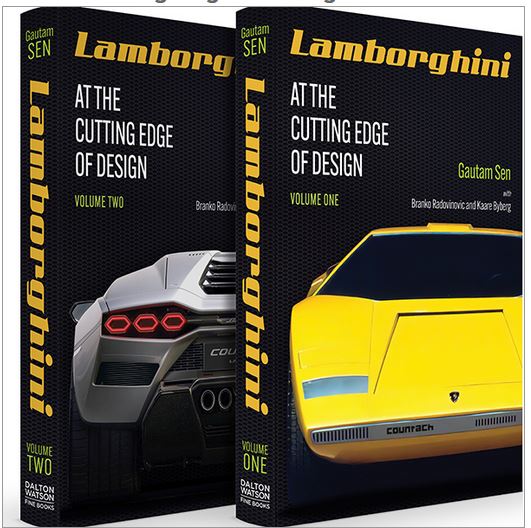
It has been said that “Lamborghini is a carmaker that makes engines, the job of the designers was to design the engine cover.” Yet, in its almost six decades long history, the supercar maker has constructed just four different engines.
However, it has been a series of models with remarkable, groundbreaking shapes, each one a veritable design revolution that has really set Lamborghini ahead of other marques. Cars like the Miura, Espada, Urraco, Countach and the Diablo astounded and startled automotive fans as much with their daring shape, form and aesthetic purity, as they did with their second-to-none engineering.
This book celebrates the design history of Lamborghini through numerous period reports and previously unpublished images. It delves into the extraordinary shapes and forms, as well as the intrepid personalities with interviews of design greats—Marcello Gandini, Luc Donckerwolke, Walter de Silva, Filippo Perini and Mitja Borkert—who made Lamborghini what it is today.
- 2 volumes with dust jackets in slipcase
- 784 pages
- 1,070 images
- Four fold-outs
- 219mm x 304mm

The Leading Edge summarizes the aerodynamic design and construction issues of solar cars and ultralight land vehicles. Author Goro Tamai draws on his own experience in designing solar cars at MIT to produce a book for the ground-up streamlined land-vehicle designer or constructor, as well as for the solar/electric/ultralight vehicle enthusiast. As with any engineering problem, the “best” body shape for solar cars, HPVs, or Electrathoners is not the body of absolute lowest drag. The vehicle system, in-cluding the driver, chassis, and energy/drive system must work in concert to produce the maximum output. The Leading Edge will help designers quantify the trade-offs, and make logical decisions.
Technical highlights:
- Vehicles covered include solar cars, human-powered vehicles (HPV), solar bikes, electrathon racers, ground-up hybrid or pure electric vehicles, and fuel-economy record cars.
- Numerous examples using specific race cars and teams, and how designers solved problems.
- Full definition of terms, with equations and examples provided for determining key aerodynamic parameters.
- All design and construction issues, from body shape, to wheels, to canopy integration, to solar panel sizing.
- How to do in-the-field testing and diagnosis of aerodynamic performance.
- Special overview section reviews the history of ultra-streamlined land vehicle development.
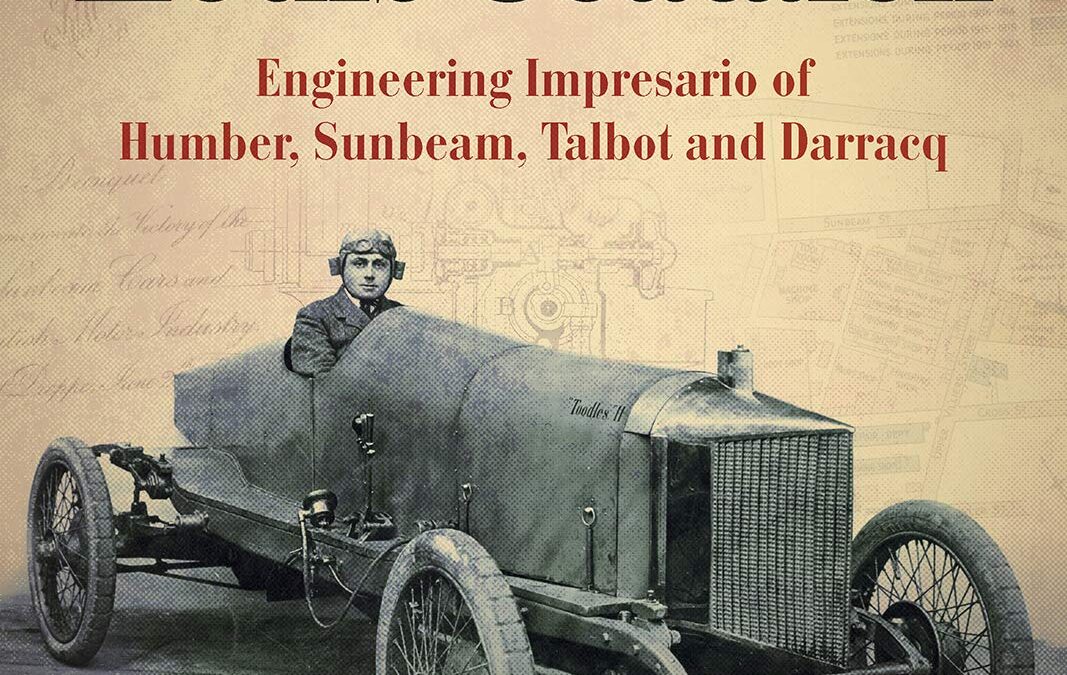
Fabled automobile designer Louis Coatalen emerges from this new biographical portrait as a man of French charm and wit—but also as one determined to obtain success by any means necessary. In Louis Coatalen: Engineering Impresario of Humber, Sunbeam, Talbot, Darracq, readers witness Coatalen’s perseverance and certain lack of scruples, as well as his ability to recognize a good idea and recruit talented individuals to aid in his visions. These characteristics, combined with undeniable leadership skills, have made him a major figure in British motoring history.
Historian Oliver Heal provides new research into Coatalen’s family and his ties across the automobile design world. He shows Coatalen’s motor racing successes, as well as his failures: his birth in Brittany, his training as an engineer in France, his rise in the British motor industry, and his accomplishments at Humber and Sunbeam, important pre-World War I carmakers. Heal also tells Coatalen’s personal racing story about how his teams were the first British car to win a Grand Prix, later breaking the World Land Speed Records on five occasions. Eventually returning to France, Coatalen helped build up Lockheed Hydraulic Brake Company and devoted much time and money to developing a powerful, though ultimately unsuccessful, diesel airplane engine. Coatalen’s complicated private life—involving four wives, drug addiction, and questionable investments—are also examined for the first time. Accompanied by 250 illustrations, including many previously unpublished photographs, this new biography provides a roaring picture of a British car-making legend.

In March of 1923, ground was broken for the Ford Engineering Laboratory building. The building was designed by Henry Ford and local architect Albert Kahn and would be one of the largest design and engineering centers of its time. Within this new book written by Beth Ann Dalrymple, Analytical Engineer for Ford Motor Company, lies the incredible 90-year history, and legacy of the Ford Engineering Laboratory and its inhabitants told through a photographer’s lens. Each turn of a page delves deeper into the progress, and people driven world of Ford automobile design & engineering. All the individuals’ current and past who have worked within these walls continue to pave the way for mankind to go further.

A landmark new history from design journalist Nick Hull, Land Rover Design – 70 years of Success offers a detailed insight to the company’s design story, from the early days of Land Rover in Solihull to the latest generation of the Range Rover Velar in 2018.
The Land Rover was born from a desperate need by the Rover Company to develop a stop-gap model to provide cashflow in the post-war years. The original aim of a simple 4×4 agricultural tool soon developed into a multi-purpose vehicle that became the mainstay of the British Army and produced numerous offshoots for the emergency services, police, forestry and aid agencies worldwide.
This book details the personalities involved in the various projects since the late 1940s up to today: the designers, modellers and studio engineers. It charts the development of Land Rover and Range Rover projects in the UK, particularly those designed in the Gaydon studio that opened in 1996, and is still a key part of JLR’s design resource. From the early days of chalk drawings and wooden models to today’s digital renderings and milled clays for the latest Range Rover Evoque, Land Rover’s designers and technicians have never been short of creativity. This book tells their story, in their own words, and is a fitting tribute to the spirit and ethos of Land Rover design and engineering.
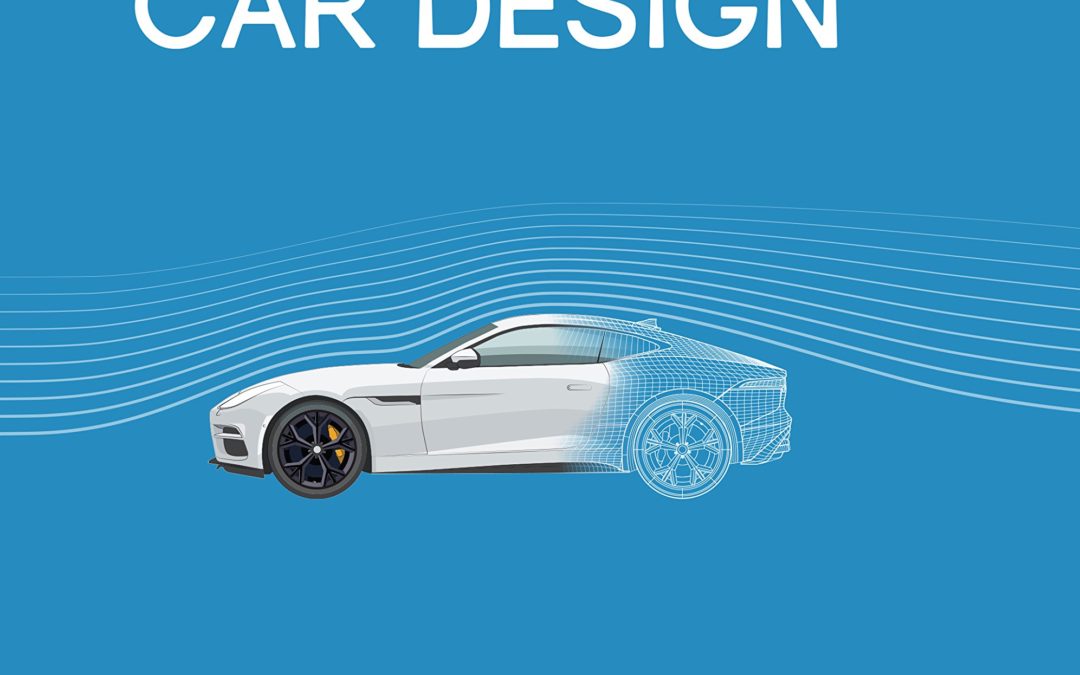
here’s so much more to car design than simply looking good. Speed Read: Car Design beaks down every element a team accounts for when designing vehicles.
People have never been more broadly aware of design as a concept and how it fits into their everyday lives. Even the simplest of consumer products compete to offer something that will better catch the public’s eye and reflect the taste and perceived lifestyle of each individual.
Like all design, car design is complex subject. It’s one in which many people have an interest–and not just gearheads. Every part of a car represents myriad decisions by the design team ruled by engineering, aesthetics, human interface, and emotion. Speed Read: Car Design helps the reader understand the hows and whys of that design process, offering an engaging review of history, theory, key concepts, and key designers. It’s a book for car enthusiasts, design fans, and anyone with a desire to better understand why our wheeled world looks the way it does.
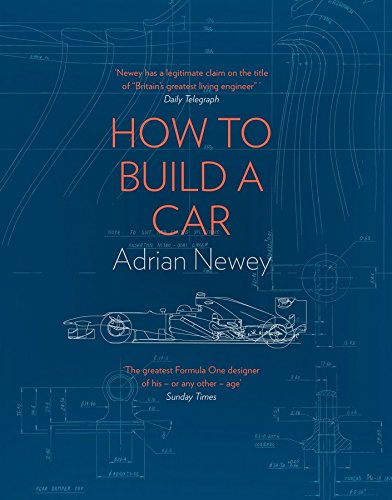
IN STOCK NOW!
The world’s foremost designer in Formula One, Adrian Newey OBE is arguably one of Britain’s greatest engineers and this is his fascinating, powerful memoir. How to Build a Car explores the story of Adrian’s unrivaled 35-year career in Formula One through the prism of the cars he has designed, the drivers he has worked alongside and the races in which he’s been involved. A true engineering genius, even in adolescence Adrian’s thoughts naturally emerged in shape and form – he began sketching his own car designs at the age of 12 and took a welding course in his school summer holidays. From his early career in IndyCar racing and on to his unparalleled success in Formula One, we learn in comprehensive, engaging and highly entertaining detail how a car actually works. Adrian has designed for the likes of Mario Andretti, Nigel Mansell, Alain Prost, Damon Hill, David Coulthard, Mika Hakkinen, Mark Webber and Sebastian Vettel, always with a shark-like purity of purpose: to make the car go faster. And while his career has been marked by unbelievable triumphs, there have also been deep tragedies; most notably Ayrton Senna’s death during his time at Williams in 1994. Beautifully illustrated with never-before-seen drawings, How to Build a Car encapsulates, through Adrian’s remarkable life story, precisely what makes Formula One so thrilling – its potential for the total synchronicity of man and machine, the perfect combination of style, efficiency and speed.
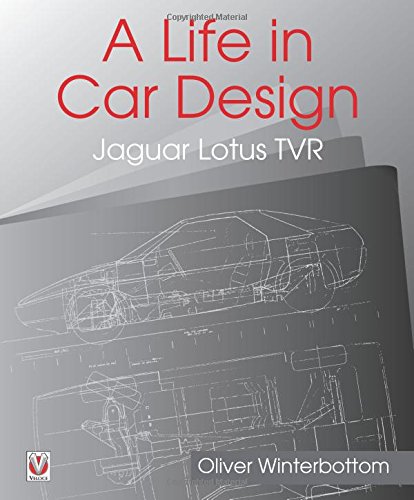
A Life in Car Design gives a unique insight into design and project work for a number of leading companies in the motor industry, including Jaguar, Lotus, TVR and General Motors.
The book recounts the author’s experiences from within the industry, tracing the changes in the design process over a period of nearly 50 years, and follows his career at home and around the world. It shows how the change from imperial to metric measurements and the growing use of computers revolutionized the quality and accuracy of modern vehicles. It also covers the issues and challenges of meeting project targets, and some of the issues that can deflect those efforts. It features previously untold stories, and is thoughtfully illustrated with historical engineering drawings and photographs.
As well as informing automobile enthusiasts it is also hoped that this book will inspire upcoming generations to consider a career in the creative field.
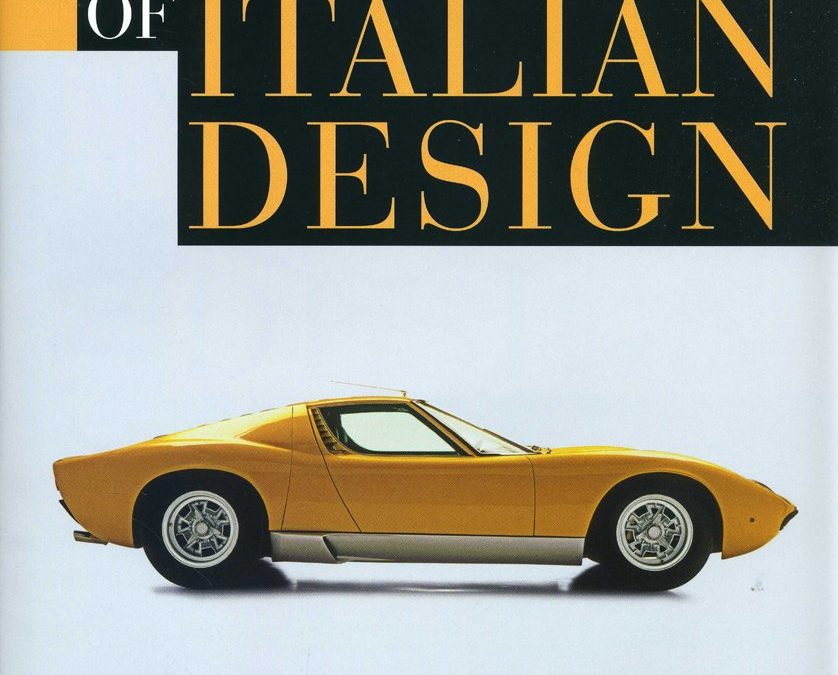
Design in Italy has always reflected the national identity of the Italians themselves: sexy, stylish, and innovative, and with more than a touch of audacity. No other country takes design so seriously, nor treats its leading practitioners with such reverence. In Italy a design is never just a product, but an expression of culture. There is a strongly held belief that good design should be implemented across all aspects of life, or as the architect Ernesto Rogers put it, “from the spoon to the city.”
Masterpieces of Italian Design is an overview of the past two centuries in Italian design and manufacturing. This new title documents the 100 most pioneering designs to come out of Italy, and explains why, with stunning images (including rare archival photographs, illustrations and patent drawings) and explanatory texts.
The Italian design community is at the forefront of modern design practice and has pioneered many styles and movements, from Rationalism to Post-Modernism and Late-Modern. With its strong design-engineering focus, highly skilled craft workshops, and specialized factories, Italy has always provided the optimum creative climate for designers and manufacturers. This major new book features the ultimate examples of Italian design from among others Alessi, B&B Italia, Cappellini, Cassina, Ducati, Ferrari, Fiat, Kartell, Lamborghini, Luceplan, Magis, Moroso, Pagani, and Riva.

After building his first race cars out of southern Louisiana junkyards, Bob Riley quickly established himself as a leading light, if not genius, when it came to race car design. His first major suspension design helped Henry Ford II make good on his vendetta to beat Enzo Ferrari at Le Mans. Riley’s first radical Indy car designs with its ingenious center hub mounted suspension resulted in A.J. Foyt’s landmark fourth victory at the Indianapolis 500 in 1977. Since then, Riley has continued to be at the heart of the world of motorsports, working with its most famous drivers at the biggest events, including the Daytona 500, where his engineering helped Dale Earnhardt finally win NASCAR’s marquee event.
Americans love the “genius” angle like everyone else. They love winners. Sports stars are overtaking Hollywood these days in popularity. Racing readers are a small but predictable group and suspect the generation familiar with Bob’s exploits at Indy would be keen on a book like this. They’re the same age group pumping up the vintage magazine market and the collectible car market.

Based on the principles of engineering science, physics and mathematics, but assuming only an elementary understanding of these, this textbook masterfully explains the theory and practice of the subject. Bringing together key topics, including the chassis frame, suspension, steering, tyres, brakes, transmission, lubrication and fuel systems, this is the first text to cover all the essential elements of race car design in one student-friendly textbook. It avoids the pitfalls of being either too theoretical and mathematical, or else resorting to approximations without explanation of the underlying theory. Where relevant, emphasis is placed on the important role that computer tools play in the modern design process.
This book is intended for motorsport engineering students and is the best possible resource for those involved in Formula Student/FSAE. It is also a valuable guide for practising car designers and constructors, and enthusiasts.






















